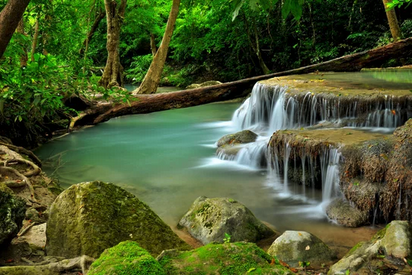River Morphology and Channel Dynamics¶
Lesson 12: River Morphology and Channel Dynamics
Introduction:
River Morphology: River morphology refers to the shape, size, and characteristics of a river channel. Understanding river morphology is crucial for assessing how water flows through the channel and how it interacts with the surrounding environment.
River Channel Types:
Meandering vs. Braided Channels: Discuss the differences between meandering and braided river channels. Meandering channels have a single, sinuous path, while braided channels consist of multiple interconnected smaller channels.
Key Concepts:
Bankfull Discharge: Define and explain the concept of bankfull discharge, which is the flow at which a river channel is at its maximum capacity without flooding. Bankfull discharge is a fundamental parameter in river morphology studies.
Sediment Transport: Discuss the processes of sediment erosion, transport, and deposition within river channels. Cover the factors that influence sediment movement, such as channel slope, flow velocity, and sediment size.
Channel Evolution: Explore how river channels evolve over time, particularly the factors leading to changes in channel geometry, including natural processes like erosion and deposition.
Channel Patterns: Discuss different channel patterns, such as straight, meandering, and braided channels, and explain the factors that determine the type of pattern a river exhibits.
Channel Dynamics:
Flow Regimes: Explain how river channel dynamics vary with different flow regimes, including low-flow conditions, baseflow, and high-flow events (floods). Discuss how these regimes impact channel stability and morphology.
Hydraulic Geometry: Introduce the concept of hydraulic geometry, which relates channel cross-sectional characteristics (e.g., width, depth) to flow velocity and discharge. Discuss the significance of hydraulic geometry in understanding channel dynamics.
Human Impacts:
Human Alterations: Explore the ways in which human activities, such as channelization, dam construction, and urbanization, can alter river morphology and dynamics. Discuss the potential environmental consequences of these alterations.
Restoration and Management:
River Restoration: Provide an overview of river restoration techniques, such as meander restoration and habitat enhancement, and their role in preserving or rehabilitating natural river morphology.
Case Studies and Examples:
Real-world Examples: Include case studies and examples of specific rivers or regions that have experienced notable changes in morphology and dynamics. Highlight the causes and consequences of these changes.
Conclusion:
Summarize the key takeaways from the lesson and emphasize the importance of understanding river morphology and channel dynamics for effective river management, environmental conservation, and flood risk mitigation.
This lesson should equip students with a comprehensive understanding of river morphology, channel dynamics, and the various factors that influence the shape and behavior of river channels in both natural and altered environments.
